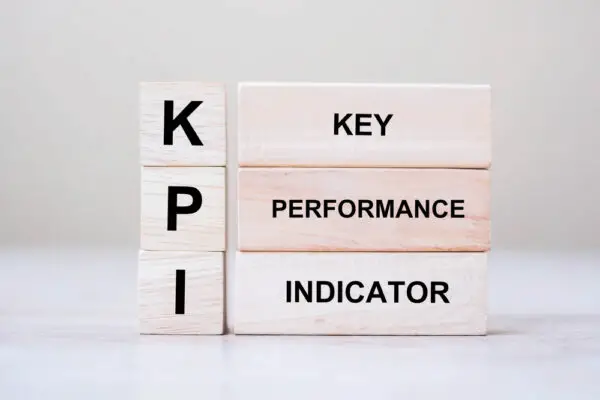“KRI” stands for Key Risk Indicator. A KRI is a metric used by organizations to provide an early signal of increasing risk exposure in various areas of the enterprise.
KRIs are valuable tools for monitoring and mitigating risks and are used to help organizations understand their risk profile and make informed decisions.
Key Risk Indicators (KRIs) are a crucial component of effective risk management in any organization. They provide insight into potential risks, allowing businesses to proactively monitor and mitigate them.
But what does KRI really mean? In this discussion, we will explore the definition and significance of KRIs, and delve into the various types of risks they address.

By understanding the role of KRIs in enterprise risk management, we can establish a comprehensive risk management strategy that safeguards the future of our organizations. So, let’s unravel the mystery of KRI and uncover its true meaning.
Key Takeaways
- Key Risk Indicators (KRIs) are essential tools in risk management, providing early warnings and insights on potential risks.
- KRIs differ from Key Performance Indicators (KPIs), focusing on identifying and mitigating risks rather than measuring performance.
- KRIs play a crucial role in enterprise risk management by identifying key risks, evaluating control effectiveness, and mitigating severe consequences.
- Establishing a risk management strategy that includes KRIs is crucial for aligning risk boundaries with business objectives and ensuring organizational readiness for potential threats.
Definition of Key Risk Indicators (KRI)
Key Risk Indicators (KRI) are essential tools in risk management that help organizations identify and monitor potential risks.
By providing early warnings and insights into potential threats, KRIs enable proactive decision-making and mitigation strategies.
Implementing effective KRI frameworks allows businesses to stay ahead of risks, protect their reputation, and ensure long-term success.
Importance of KRI in risk management
Effective risk management relies on the use of Key Risk Indicators (KRIs), which provide valuable insights into potential risks and assist in making informed decisions to mitigate them.
KRIs help organizations monitor risk trends, identify key risks, and evaluate the effectiveness of controls.
Key Risk Indicators (KRIs) are crucial in risk management as they serve as a set of metrics that help organizations identify potential risks before they occur. The importance of KRIs in risk management can be summarized as follows:
- Early Warning Signals: KRIs provide an advance notice of potential risks, allowing organizations to take proactive measures before these risks escalate into actual problems. This can help in preventing losses or mitigating their impact (TechTarget).
- Performance Tracking: They allow for the tracking of changes in risk levels over time, which can be crucial for understanding trends and patterns in operational and strategic risk areas (MetricStream).
- Decision Support: By quantifying risks, KRIs offer valuable information that supports timely and informed decision-making, which is essential for effective risk management (Pirani).
- Risk Appetite Alignment: KRIs help organizations align their risk-taking activities with their risk appetite, ensuring that they do not exceed the levels of risk they are willing to accept.
- Regulatory Compliance: For many industries, monitoring certain KRIs is a regulatory requirement. Staying compliant can avoid legal penalties and maintain good standing with regulatory bodies.
- Operational Efficiency: By focusing on KRIs, organizations can allocate resources more efficiently, directing attention and resources to areas with the highest potential for risk.
- Strategic Planning: KRIs are an integral part of strategic planning as they provide insights into potential roadblocks and challenges that could impact long-term goals.
Understanding Key Risk Indicators
Understanding Key Risk Indicators (KRIs) is essential for effective risk management.
KRIs are specific metrics used to monitor and assess potential risks that may impact an organization’s objectives.
It is important to differentiate KRIs from Key Performance Indicators (KPIs), as KRIs focus on identifying and mitigating potential risks, while KPIs measure an organization’s performance.
Definition and purpose of Key Risk Indicators
Key Risk Indicators (KRIs) are metrics used to signal the potential for exposure to a variety of risks in an organization. They serve as early warning signs that enable companies to monitor and measure risk factors that can affect their strategic goals, operations, and overall success. The purpose of KRIs is to help organizations anticipate and mitigate risks by:
- Identifying Potential Risks: KRIs help in identifying risks that could potentially harm the organization, allowing for preemptive actions to be taken.
- Assessing Risk Magnitude: They provide a way to assess the magnitude and severity of risks, which is crucial for prioritizing risk management efforts.
- Monitoring Risk Trends: By tracking KRIs over time, organizations can spot trends and patterns in risk exposure, which is essential for understanding and managing the evolution of risk.
- Informing Risk Management Decisions: KRIs provide critical information that supports risk management decisions, resource allocation, and strategic planning.
- Enhancing Communication: They facilitate better communication about risks within the organization by providing a common language and understandable metrics.
- Supporting Compliance: For regulated industries, KRIs are often part of compliance requirements, helping organizations to meet legal and regulatory standards.
In the realm of risk management, organizations employ Key Risk Indicators (KRIs) to identify and monitor potential hazards, providing valuable insights into potential risks and enabling proactive decision-making.
KRIs are metrics used to measure and evaluate the potential impact of various types of risks on a company’s activities and customers.
They help organizations set thresholds for acceptable levels of risk over a specified period of time and enable timely response to threats.
Differentiating KRIs from Key Performance Indicators (KPIs)
KRIs and Key Performance Indicators (KPIs) are distinct metrics used in risk management and performance evaluation, respectively. While KPIs focus on measuring the success of an organization’s objectives, KRIs are used to identify and monitor potential risks that could impact those objectives.
KRIs are essential in the risk management process as they help risk managers in the identification, assessment, and response to risk events.
Unlike KPIs, which often measure customer satisfaction or other key performance metrics, KRIs are specifically designed to support a comprehensive risk management strategy.
Significance of KRIs in Enterprise Risk Management
The integration of Key Risk Indicators (KRIs) in the risk management approach is of utmost importance in enterprise risk management.
KRIs play a crucial role in identifying potential risks and assessing their impact on the organization.
Integration of KRIs in the risk management approach
Effective integration of Key Risk Indicators (KRIs) within the risk management approach is crucial for ensuring the success of Enterprise Risk Management.
KRIs provide a proactive and forward-looking perspective on potential risks, enabling organizations to identify and monitor emerging risks in real-time.
By integrating KRIs into the risk management program, organizations can effectively assess risk scenarios, track risk levels through dashboards, and make informed decisions to mitigate risks. This integration enhances the overall risk management landscape and empowers risk management leaders to proactively address potential risks.
Benefits of Integration | Challenges of Integration | Strategies for Effective Integration |
| – Enhanced risk monitoring | – Lack of standardized KRI framework | – Identify relevant KRIs for each risk |
| – Proactive identification of emerging risks | – Difficulty in measuring the effectiveness of KRIs | – Establish clear risk thresholds |
| – Improved decision-making | – Data quality and availability issues | – Develop automated reporting mechanisms |
| – Timely response to risk events | – Resistance to change within the organization | – Establish a culture of risk awareness |
| – Enhanced risk mitigation strategies | – Integration with existing risk management systems | – Regular review and update of KRIs |
Role of KRIs in identifying potential risks and their impact
In the realm of Enterprise Risk Management, the role of Key Risk Indicators (KRIs) is paramount in identifying potential risks and understanding their impact on an organization.
KRIs play a crucial role in businesses by helping to identify potential risks and their impact on various business units.
By monitoring KRIs, organizations can proactively identify and address potential risks such as a security breach.
This allows businesses to incorporate risk management strategies into their strategic plans and mitigate potential impacts.
Types of Risks Addressed by KRIs
KRIs, or Key Risk Indicators, are used to measure and monitor various types of risks within an organization. These risks include:
- Strategic risks, which are associated with the achievement of long-term objectives.
- Operational risks, which pertain to day-to-day activities and processes.
- Financial risks, which involve financial performance and stability.
- Compliance risks, which relate to adherence to laws and regulations.
Strategic risks
Strategic risks encompass a wide range of potential threats that organizations must proactively address through the use of Key Risk Indicators (KRIs).
These risks are crucial for effective risk management, as they can significantly impact an organization’s long-term goals and objectives.
To address strategic risks, organizations need to conduct thorough risk assessments and identify key indicators that will help monitor and mitigate these risks.
A strong risk strategy, coupled with a clear understanding of risk tolerance and appetite, as well as effective risk governance and culture, is essential for managing strategic risks.
- Thorough risk assessment.
- Identification of key risk indicators.
- Effective risk mitigation strategies.
- Clear risk strategy, tolerance, and appetite.
- Strong risk governance and culture.
Operational risks
Operational risks encompass a wide range of potential threats that organizations must actively manage through the use of Key Risk Indicators (KRIs).
These KRIs serve as tools for enterprise risk management, allowing organizations to identify and monitor their risk exposure. By evaluating the control environment and internal controls, organizations can effectively implement operational risk management strategies.
This includes assessing the risk landscape, maintaining a risk posture, and continuously monitoring critical business attributes through ongoing risk monitoring and the use of key result indicators.
Financial risks
Financial risks are a critical consideration in enterprise risk management. Organizations must effectively address potential threats to their financial stability and performance.
To manage these risks, organizations need to assess their risk profile, evaluate the level of risk associated with different financial assets, and monitor critical metrics that impact business performance.
Aligning risk management strategies with business objectives is crucial. Organizations must also be prepared to mitigate the impact of economic downturns and potential breaches that could harm their financial well-being.
Compliance risks
To effectively manage enterprise risk, organizations must address compliance risks by implementing Key Risk Indicators (KRIs) that identify and monitor potential threats to their adherence to regulatory requirements and ethical standards.
Compliance risks are a critical aspect of risk management, as they can lead to severe consequences such as legal penalties, reputational damage, and loss of customer trust.

Establishing a Risk Management Strategy with KRIs
To establish a risk management strategy with Key Risk Indicators (KRIs), it is essential to define the organization’s risk appetite and tolerance levels.
Risk appetite refers to the amount of risk an organization is willing to accept in pursuit of its objectives, while tolerance levels determine the acceptable range of deviation from those objectives.
Defining risk appetite and tolerance levels
Defining risk appetite and tolerance levels is a crucial step in establishing a comprehensive Risk Management Strategy with Key Risk Indicators (KRIs). It helps align the organization’s risk-taking behavior with its business goals.
Business leaders need to identify the level of risk they are willing to accept in order to achieve key goals. This involves considering factors such as employee satisfaction, customer complaints, and advances in the industry.
The action plan must also include examples of KRIs to ensure internal acceptance.
Frequently Asked Questions
How Do Key Risk Indicators (Kris) Differ From Other Risk Management Tools?
Key Risk Indicators (KRIs) are a crucial component of risk management tools. They differ from other tools by providing specific metrics and data points that help organizations measure, monitor, and assess potential risks and their impact on business objectives.
Are Key Risk Indicators (Kris) Applicable to All Types of Industries and Organizations?
Key Risk Indicators (KRIs) are applicable to all types of industries and organizations. They provide a proactive approach to risk management by identifying and monitoring potential risks specific to each industry, enabling timely mitigation strategies and informed decision-making.
Can Key Risk Indicators (Kris) Help in Identifying Emerging Risks?
Key risk indicators (KRIs) can be instrumental in identifying emerging risks. By monitoring specific metrics and indicators, organizations can proactively detect potential threats and take necessary actions to mitigate them, ensuring better risk management and decision-making.
What Are Some Challenges in Implementing Key Risk Indicators (Kris) in an Organization?
Implementing key risk indicators (KRIs) in an organization can present various challenges. These may include obtaining accurate and relevant data, defining appropriate thresholds, ensuring effective communication and buy-in from stakeholders, and integrating KRIs into existing risk management processes.
How Can Key Risk Indicators (Kris) Be Integrated Into Existing Risk Management Frameworks or Systems?
Key risk indicators (KRIs) can be integrated into existing risk management frameworks or systems by aligning them with the organization’s risk appetite, establishing clear metrics and thresholds, ensuring data accuracy, and regularly monitoring and reviewing the KRIs to enhance risk mitigation efforts.

Conclusion
In conclusion, Key Risk Indicators (KRIs) play a significant role in enterprise risk management by providing valuable insights into potential risks and helping organizations establish a risk management strategy.
By monitoring and analyzing KRIs, companies can proactively identify and mitigate risks, ensuring the overall success and sustainability of the business.
Incorporating KRIs into risk management practices is crucial for effectively managing various types of risks and making informed decisions to protect the organization’s interests.

Chris Ekai is a Risk Management expert with over 10 years of experience in the field. He has a Master’s(MSc) degree in Risk Management from University of Portsmouth and is a CPA and Finance professional. He currently works as a Content Manager at Risk Publishing, writing about Enterprise Risk Management, Business Continuity Management and Project Management.

